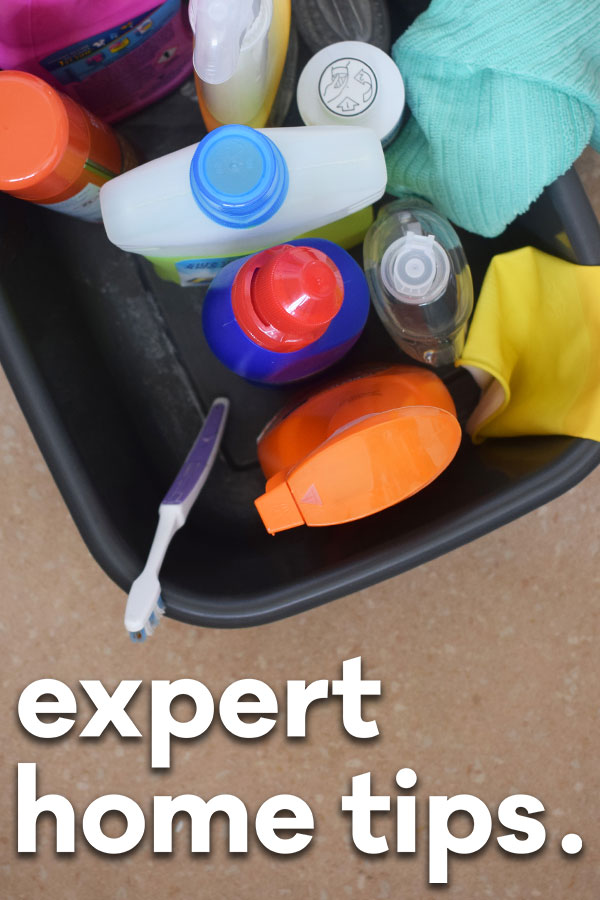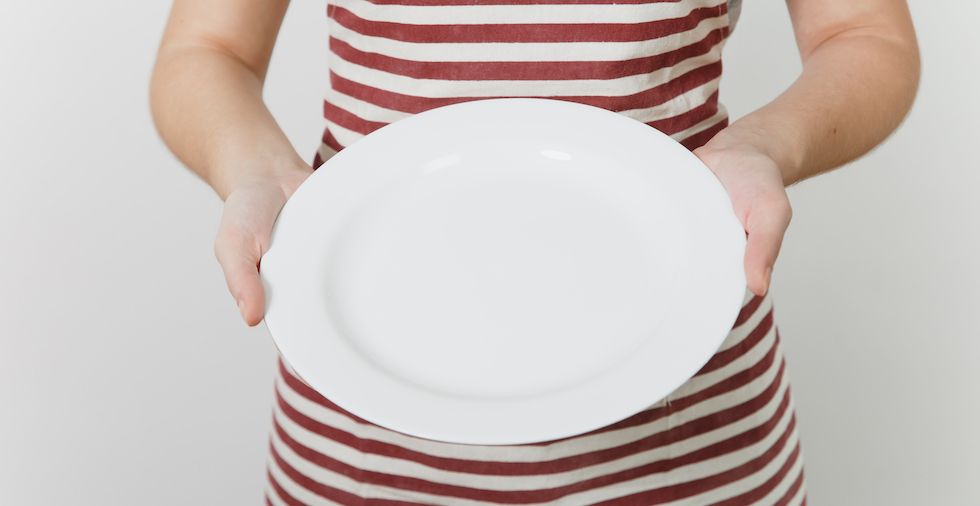It’s Friday night, and you’ve cooked up a storm for your dinner guests. Yes, you’ve invited your nearest and dearest over for the mother of all dinner parties. You’ve been prepping for days, ran to the shop to grab last-minute ingredients, and your mushroom risotto looks perfect. You’re just about to pop open some wine when you remember one thing.
To give your dining experience that extra bit of pizazz, you want to heat the plates. That’s what they do in fancy restaurants, of course! But can you put dishes in the oven? The last thing you want is to ruin your dinner party by causing an explosion in the oven. Yikes. Before you whack the plates in there, read our complete safety guide.
Can you put a plate in the oven?
First, let’s deal with the most critical question: can you put a plate in the oven? The answer is that it depends on the type of plate. Oven-safe plates will have a symbol on them to let you know. The sign has an oven on it, so it should be easy to find. Before you pop your plates in the oven, flip them over and look for this sign.
Of course, some plates are made for oven usage. Pyrex was specifically designed to be used in an oven. For that reason, if you happen to have Pyrex plates, chances are, you can quickly heat them in the oven. However, you should always look for the symbol.
But wait, what if you have a sturdy plate with no symbol? While you might be able to put the plate in the oven, doing so is risky. Certain types of material — especially those with heavy designs — may break under pressure. That could be a disaster. So to keep yourself and your oven safe, you should avoid putting these plates in the oven at all costs.
Materials you can usually put in the oven
Now that you know whether you can put a plate in the oven, let’s talk about the materials you can usually put in the oven. Whenever you’re trying to work out whether you can put something in the oven, it’s worth looking for the oven-safe symbol (as we have described). However, some materials tend to be safe for over usage:
● Ceramics
Can ceramic go in the oven? The short answer is yes. As a general rule, ceramics tend to be oven-safe. However, before you pop one in the oven, you should check whether it has the oven-safe symbol. If you can’t find it, there are a couple of things that you can look out for.
For example, if the ceramic item has intricate details, you may find that these will crack in the oven. On the other hand, if your ceramic plate or bowl is glazed, you might find it unsafe for oven use. It’s always better to be safe than sorry here.
● Food-grade silicone
While silicone may not seem like the most heat-resistant material, the opposite is true. When you get food-grade silicone, you will find that you can use it in the oven. For instance, you might get a silicone muffin tray or a lining for a baking tray. These items have been made to be oven-safe, so you will have no problem using them in the appliance.
● Stainless steel
Of course, many of the items you use in the oven are stainless steel. This sturdy material is usually safe to use in extreme heat. However, you should ensure there are no wooden or plastic details on it. You don’t want a handle melting on you.
● Cast iron
Large pots, pans, and even baking trays are often made of cast iron. As a result, these items tend to be heavier and more durable than your standard kitchenware. For that reason, you will find that you can use them for a whole range of purposes, including high-temperature baking.
● Oven-safe glass
If you have a glass bowl or plate, check whether it is oven-safe before using it. Often, these items are made from reinforced materials, which means you can use them in the oven. However, this can be something of a grey area. Always check for the symbol — or the Pyrex sign — before using the glass in the oven.
Materials you should never put in the oven
We’ve already covered the materials you can use in the oven; let’s move on to the ones you shouldn’t. If you don’t want to end up setting things on fire or causing an explosion, you should be extra careful about the materials you use there. With that in mind, here are some of the things that you should never put in the oven:
● Plastic
Can you put a plastic plate in the oven? If you’ve been asking yourself that question, we have the answer for you: no. You should never use plastic in the oven. This material will melt at high heat, so you will end up with a sticky mess. Not only that, but there are often harmful chemicals in plastic that may be released when it melts and bends.
● Paper and cardboard
Another question you may be wondering is: can you put a paper plate in the oven? Once again, the answer is a firm no. Paper and cardboard can easily set alight (even if you use a low temperature!). You should never put these items in the oven to protect yourself and your home. There is no way to heat these things at home safely.
● Wood
You may have wooden bowls, plates, or pots at home. While these are uncommon, you must avoid putting them in the oven if you own some of them. Wood is not as robust as metal or some types of glass. That means it may warp or even crack when exposed to high temperatures. You should also take care when washing these items.
● Other items!
Plates or bowls that don’t carry the oven-safe symbol should not be used in the oven. While you may think these items are sturdy, you cannot know how they will react to extreme heat. So proceed with caution whenever you are using these specific items.
Learning how to warm plates in the oven doesn’t have to be complicated. In this guide, we have outlined the materials you can and can’t use in the oven. As always, your safety should come first when dealing with extreme temperatures. Ensuring the plate you are using is safe for the oven is essential. Follow our guide and stay safe!
Q&A
Do you have a question that we haven’t covered? Don’t panic! We have the answers that you need right here:
Can you put bowls in the oven?
The answer depends on the material the bowl is made from. If in doubt, you should check whether the bowl carries the oven-safe symbol. If it doesn’t, don’t put it in the oven.
Can you put metal in the oven?
Yes — you can put some types of metal in the oven. Stainless steel and cast iron tend to be safe for oven use. Of course, you should always check whether it is made for oven use.
Is porcelain oven-safe?
Believe it or not, porcelain can be oven-safe. So, if you have a porcelain plate or bowl, check which symbols it has on it. If it has the oven-safe symbol, you are good to go.
Can you put a microwave plate in the oven?
You might think you can use the turntable (plate!) from your microwave in the oven. However, this is unsafe, and you should not do it. While the microwave gets hot, it’s not the same heat you will find in your oven. The glass will most likely shatter when you try to use it in the oven. Avoid this mistake at all costs.
Can you put a paper plate in the oven?
No! As we have already covered, using a paper plate in the oven poses a fire risk. You don’t want to make that mistake. You should never attempt to heat a paper plate.
Have any burning questions? Chat to us in the comments below!


What is the oven safe symbol please? Thank you
The oven-safe symbol is a picture of an oven with a tray or dish in the centre, indicating that the cookware can be safely used in an oven. It is typically found on the bottom or back of cookware or the packaging.
I bought some silicon plate separators a while back (microwave safe) and use them to heat plates in the microwave when needed (only the plates and bowls which have the microwave symbol!). Saves a lot of faffing about, especially when you're not using the oven.
That's a great idea! Using silicon plate separators is a convenient way to heat plates in the microwave without worrying about the plates getting too hot to handle. Just be sure to follow the instructions on the product and only use plates and bowls that are microwave safe, as using non-microwave-safe dishes can cause damage or even start a fire. It's always better to be cautious when using appliances like the microwave.